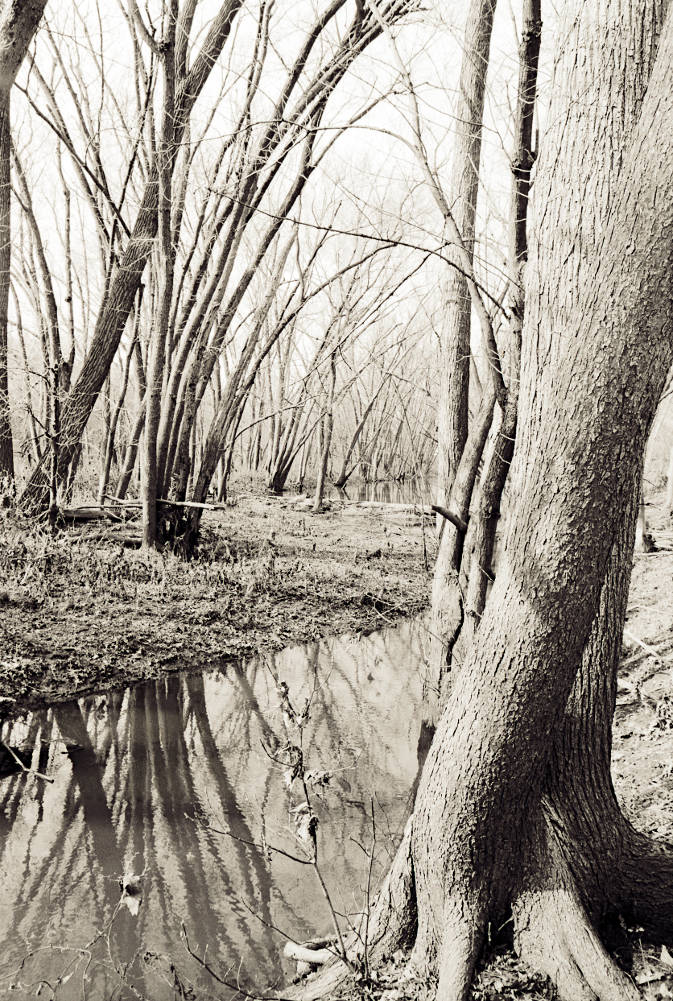
Trees along the banks of the Kishwaukee River, found at the Kishwaukee River Forest Preserve of Rockford, IL, USA. While the nearly unbroken water and undisturbed branches and forest floor were incredibly peaceful to take in, they rested at the base of a large hill – the top of which was marked with snaking blackness that was far too chaotic to have come from a controlled burn. Burnt grass twisted beside the entry road and ran into a copse that separated the upper preserve from a highway. Little plumes of white smoke belched from smoldering logs and patches of brush.
Upset over the needless destruction caused by what I’m sure was a tossed cigarette, I went to smother the smoldering embers within the copse. While approaching one of the smoldering logs, though, a sudden questioning of my actions stopped me. My valiant motivations suddenly seemed foolish, and any action I could take quickly struck me as brash interference. I knew the trees I stood beneath were no strangers to fire – that it was entirely likely that they, the other plants of the forest floor, and the countless, unseen creatures and insects who made their homes in that area, owed their existence to periodic fires clearing invasive pests and fertilizing the scorched ground. Though destructive, smothering the remaining embers would be even further destructive to a cycle that was significant beyond my comprehension, and beneficial in ways that continue to tantalize my imagination.
I left the top of that hill to come to this scene. As above, I’m certain that the these trees have known flame, and have been strengthened all the more by it.
As a caveat, fire has its place in nature, but it’s our responsibility to call emergency workers if spreading fire is found in a park or preserve. Numerous plant species have evolved to weather periodic burning, but, with so many parks and preserves edged by personal, municipal, and state-owned property, it’s too great of a risk to allow fires to rage outside of professional controlled burns.
Minolta XG7
Minolta MD W.Rokkor-X 28mm f/2.8
Fuji Neopan Acros – ISO 100
